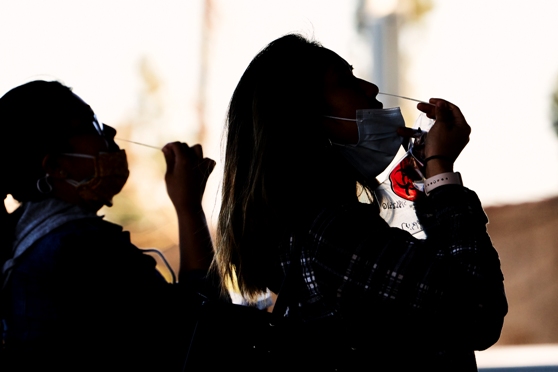The virus is devastating the US
And leaving an uneven toll

By Manny Fernandez, Julie Bosman, Amy Harmon, Danielle Ivory and Mitch Smith
HOUSTON — The United States is winding up a particularly devastating week, one of the worst since the coronavirus pandemic began nine months ago.
On Friday (4), a national single-day record was set, with more than 226,000 new cases. It was one of many data points that illustrated the depth and spread of a virus that has killed more than 278,000 people in this country, more than the entire population of Lubbock, Texas, or Modesto, California, or Jersey City, New Jersey.
“It’s just an astonishing number,” said Caitlin Rivers, a senior scholar at the Johns Hopkins Centre for Health Security. “We’re in the middle of this really severe wave and I think as we go through the day to day of this pandemic, it can be easy to lose sight of how massive and deep the tragedy is.”
In California, where daily case reports have tripled in the last month, Gov. Gavin Newsom announced a new round of regional stay-at-home orders to address a mounting crisis over intensive-care beds. Some counties in the Bay Area said they were enacting tough new restrictions this weekend, before the state rules come into effect. And in South Florida, which is in the early stages of a new surge, physicians and politicians alike worried that there might not be enough resources to treat the sick.
As the virus has spread, infectious-disease experts have gained a better understanding of who among the nation’s nearly 330 million residents is the most vulnerable.
Nursing home deaths have consistently represented about 40% of the country’s COVID-19 deaths since midsummer, even as facilities kept visitors away and took other precautions and as the share of infections related to long-term care facilities fell substantially.
Existing health conditions have played a pivotal role in determining who survives the virus. Americans who have conditions like diabetes, high blood pressure and obesity — about 45% of the population — are more vulnerable.
And new evidence has emerged that people in lower-income neighbourhoods experienced higher exposure risk to the virus because of their need to work outside the home.
Months ago, there was a notion that the virus was a big-city phenomenon, as New York, Detroit, New Orleans and other urban centtrs were hard hit. It has become clear that is no longer true, if it ever was.
The virus has torn through places on the southwestern border with Mexico, where cases are spiking around Nogales, Arizona, and up on the northern border with Canada, too, where the Roseau, Minnesota, area has set records. Los Angeles and Miami are current hot spots, but so are Ziebach County, South Dakota, and Deaf Smith County, Texas.
The poor, in particular, have been more at risk than the rich, according to analyses of those who have been sickened by the virus or succumbed to it.
And new studies have suggested that the reason the virus has affected Black and Latino communities more than white neighbourhoods is tied to social and environmental factors, not any innate vulnerability.
According to one recent study of cellphone data, people in lower-income neighbourhoods experienced significantly higher exposure risk to the virus because they were compelled to go to jobs outside their homes.
One of the key at-risk demographics are older Americans who live in nursing homes and similar facilities.
More than 787,000 residents and employees of at least 28,000 nursing homes and long-term care centres for older people in the United States have contracted the coronavirus, according to a New York Times analysis based on federal, state, local and facility-level data. Of those infected, more than 106,000 have perished.
The virus is known to be particularly lethal to those in their 60s and older who have underlying health conditions. And it can spread easily through congregate facilities, where many people live in a confined environment and workers move from room to room.
After her husband’s nursing home in Boone, North Carolina, stopped allowing family members to enter the facility because of coronavirus risks, Doris Greer stood outside his window three or four times a week. They had a routine.
Richard H. Greer, 79, who had heart problems and could not walk after a stroke, would call and ask his wife to bring their dogs, a rat terrier and “Boston Weiner” named Macy and Teton. Doris Greer would drive over and a nursing home employee would slide Richard Greer’s window open just a little bit, and the two would talk through the screen.
Since March, Doris Greer had prayed that the coronavirus would not make its way into her husband’s facility, but she thought her husband was well protected because he rarely, if ever, left his room.
Then one day in the fall, she arrived at the window and a worker told her that her husband had tested positive and that they could not talk. His condition soon deteriorated.
She was permitted to go into the facility briefly in September in protective gear. Richard Greer was on oxygen and unconscious. Joined by her sister, she then went back outside and sat by his window and talked to him. She stayed until it was very late and then came back to the window the next morning.
“I don’t know if he could hear me,” Doris Greer said. “I just told him he was OK and that I loved him.”
She was still there at the window when he died later that day.
-New York Times

